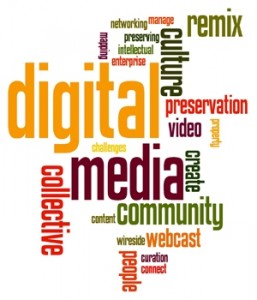 Parents and churches are challenged to adapt to the communication styles and technologies of young people who rely heavily on digital media. The following related information is from a recent issue of the Mission America newsletter.
Parents and churches are challenged to adapt to the communication styles and technologies of young people who rely heavily on digital media. The following related information is from a recent issue of the Mission America newsletter.
Future of the Internet
A new Pew Research survey about the future of the Internet finds many young people are growing up hyper-connected to each other and the mobile Web. They are counting on the Internet as their external brain to be nimble, making them quick-acting multitaskers who will do well in key respects. However, many analysts argue it is a myth that Millennials have a special aptitude for digital media because they’ve grown up digital. Good research has shown that even especially bright kids are less productive when multitasking, a finding resisted by plenty of grown-ups as well. The immersive nature of 24/7 connectedness creates the illusion that Millennials can somehow tap into a form of collective intelligence just by being online while looking impatiently for messages every 3 minutes. (Center for Media Research Brief 3/14/12)
Digital Natives
Consumers in their 20s switch media venues about 27 times per nonworking hour – the equivalent of more than 13 times during a standard half-hour TV show according to a recent Time Inc. study by Innerscope Research. In contrast, digital immigrants (consumers who grew up with TV, radio and print and adapted to new technologies) switched media venues just 17 times per nonworking hour. Put another way, natives switch about 35% more than immigrants. (Advertising Age 4/9/12)
Social Networkers
There are now 146 million “Social Networkers” in the U.S. – adults age 18 and older who have used a social networking site at least once in the last month. 36% use it to stay in touch, 25% for entertainment, 20% for information, 15% for self expression and 4% for dating. (Center for Media Research Brief 4/16/12)
Texting Teens
63% of U.S. teens were text-messaging daily as of 7/11, up from 54% in 9/09. The volume of texting has also grown from 50 messages a day to 60 for the typical teen. Much of that increase is among older teens (14-17) ramping up from a median of 60 texts in 2009 to 100 last year. The daily exchange of texts among almost two-thirds of teens far surpasses other types of daily communication, including calling by cell phone (39%), face-to-face socializing outside of school (35%), social network messaging (29%), instant messaging (22%), talking via landline (19%), and emailing (6%). (Pew Research Center’s Internet & American Life Project 3/12)
Connected Kids
An estimated 15% of children under 11 own a mobile phone, and that number is expected to grow to 22% by 2015. (Adweek 3/26/12)


